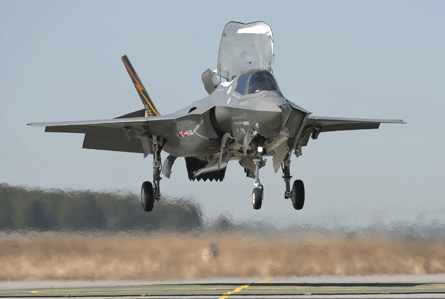Lockheed Martin has released new details about the reliability problems slowing flight tests on the short take-off and vertical landing F-35B.
The four STOVL aircraft in flight test have completed 74 flights so far this year, or 21 fewer than planned, chief executive Robert Stevens told stock analysts during the company's second quarter earnings teleconference on 27 July.
Stevens released the numbers one week after Flightglobal reported that the first STOVL aircraft, called BF-1, has fallen behind schedule as a result of reliability issues.
The delays have been caused by high failure rates on components that "you would probably not view as major systems", Stevens says. He identifies the thermal cooling fans, door actuators and certain components in the power system, such as valves or switches.
 |
|---|
© Lockheed Martin |
"When these components don't work because of their initial low reliability, we don't fly, and we don't fly because assuring safety is our uncompromised highest priority," he says.
Other than the door actuators, which include several that are unique to the F-35B, Stevens did not explain why poor reliability on thermal cooling fans and power system components are not causing similar schedule problems for the other F-35 variants. Both the conventional take-off and landing F-35A and F-35C carrier variant fleets are ahead of schedule this year.
The delays have slowed envelope expansion work for the STOVL aircraft to a crawl. Since completing its first vertical landing on 18 March, BF-1 had landed from a hover only once more by late July.
The aircraft must complete about 50 vertical landings to expand the envelope enough by March 2011 to begin trials aboard the US Marine Corps' USS Wasp LHD-1 amphibious assault ship.
Further delays could threaten the USMC's plan to declare initial operational capability for the F-35B in December 2012.
Stevens says the company is working with suppliers and government officials to fix the reliability and schedule shortfalls. Options for the supply chain include redesigning components, changing manufacturing processes or having more spare parts, he adds.
The government is also considering proposals to "hot-pit" the F-35B fleet, meaning the aircraft would be refuelled after landing while the engine is still running, before taking off again.
"If we don't shut the engine off to get more data by reducing turnaround time, we have fewer flights, but we can certainly generate more information, which is the essential purpose and the ultimate goal of the flight-test programme," Stevens says.
Source: Flight International
















